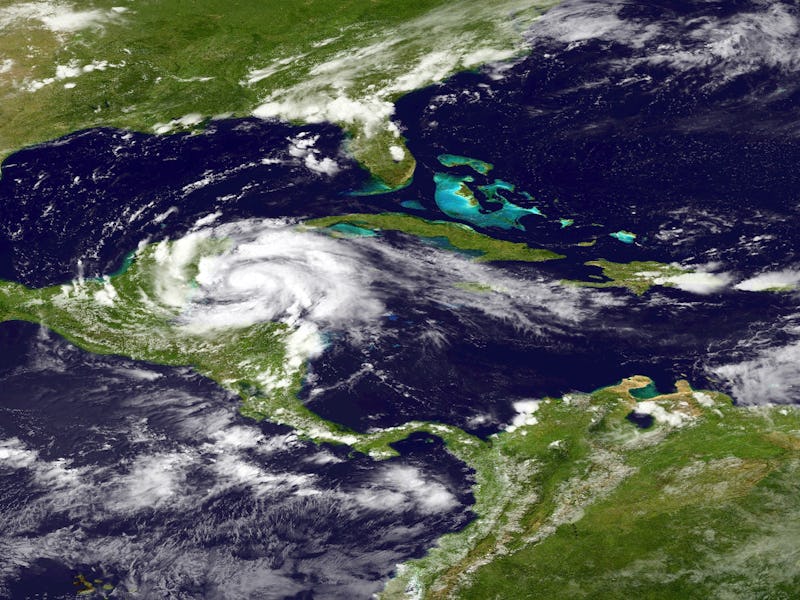Caribbean's Whistling Rossby Wormhole Baffles Scientists, Serenades Satellites
There's a hole in the bottom of the sea.

Maybe you’ve seen the news: the Caribbean Sea is emanating an unearthly sound that can be heard from space. So why can’t you hear this noise, from your position significantly closer to the Caribbean than a satellite in orbit? Are you not listening hard enough? Is it drowned out by the white noise of whatever cityscape you live in or near?
The truth is, like many other science stories, the tale of the Rossby Whistle is far from straightforward. See, the Caribbean is not really making a noise, since noise typically refers to vibrations of wavelengths that can be heard. The ocean is vibrating, but at a frequency several octaves lower than the aural range. The vibrations are being measured as gravitational energy by satellites in Earth’s orbit. And to say that they can be heard from space is true only metaphorically. It’s analogous to saying we can “hear” black hole collisions 1.3 billion light-years away; it has more to do with the sensitivity of the instrument than the magnitude of the signal.
But that doesn’t mean that what’s happening in the Caribbean isn’t extremely unique and cool; scientists have never seen anything like it before. The University of Liverpool researchers published the findings this week in Geophysical Research Letters. This is what’s going on: There’s a special kind of wave called a Rossby wave that travels across the planet’s seas. It’s different in character from regular ocean waves, and you can’t observe it without special instruments. Rossby waves have a short wave height (between a few inches and a few feet, typically), and a very long period — it takes the one traveling across the Caribbean 120 days to cycle through only once.
Here’s the weird part: When the Rossby hits the Caribbean basin — it disappears, only to reappear on the other side of the basin. Imagine if regular ocean waves suddenly stopped and the water became flat, but then, a bit further along, there were waves again exactly as though the waves had never stopped. That’s basically what this looks like, and it’s such a strange phenomenon that scientists have dubbed it the “Rossby wormhole.”
The thing is, the wave energy doesn’t go away, it’s just not visible for a time on the surface. Instead, the energy is transferred deep within the basin, where it interacts with the sea floor, forming compression waves related to the changing bottom pressure. It is this interaction that produces the pulsing vibrations sensed in space. The satellites are measuring a rhythmic change in gravitational energy, which is related the the basin’s changing mass as the wave travels through.
Here’s another reason for the analogy to sound: the interaction between the basin and the water rushing through it has the same physical dynamic as a whistle. Imagine that your breath is the Rossby wave, and the Caribbean basin is the chamber of a whistle. The fluid tumbles through the cavity, and a release of vibration is the result. Your ears, in this case, are the satellites, sensing the waves of energy emitted.
You hear sound at vibrational frequencies between 20 and 20,000 cycles per second (hertz). This Rossby vibration cycles just once every 120 days. That’s about 0.000000096 hertz. So it’s not really sound, but if you digitally speed it up, like turning your voice into a Chipmunks voice many times over, you can hear it.